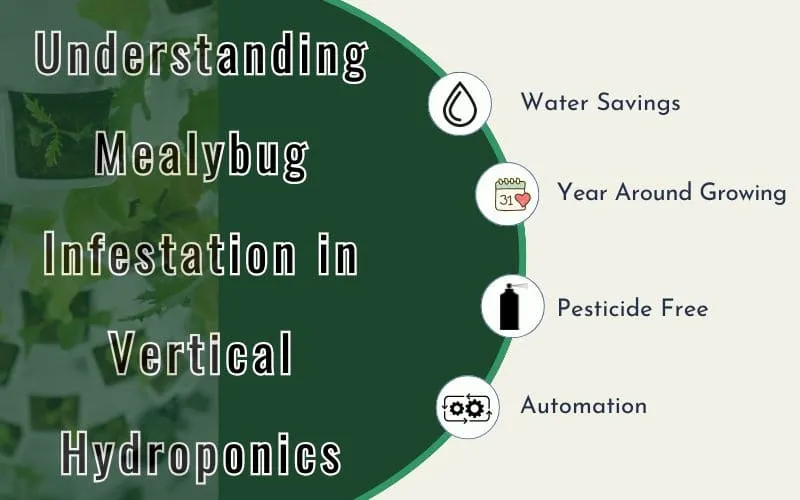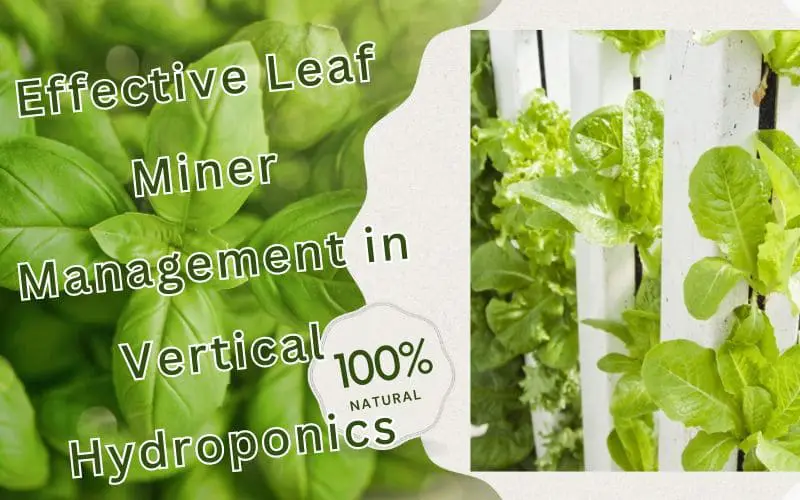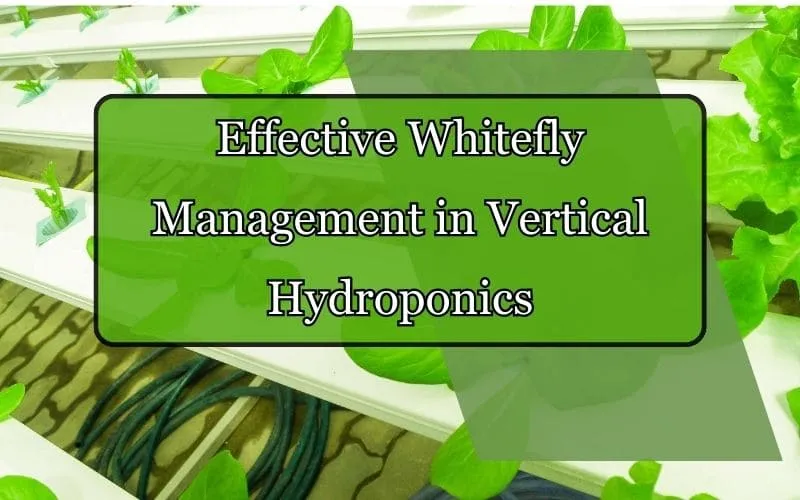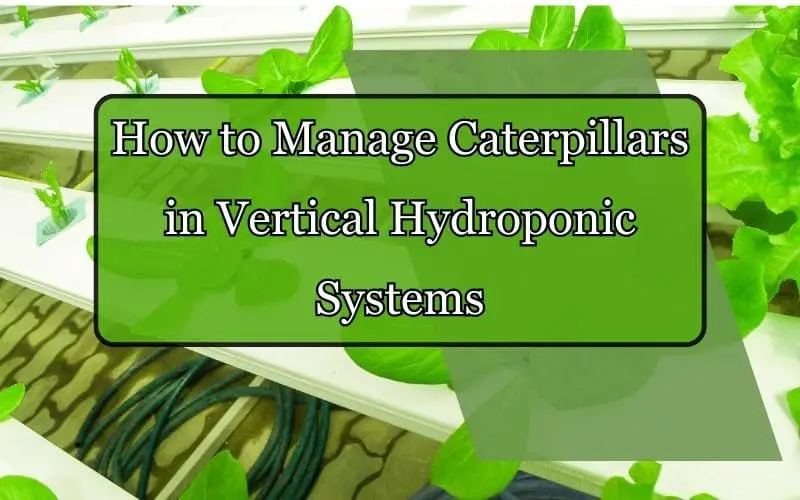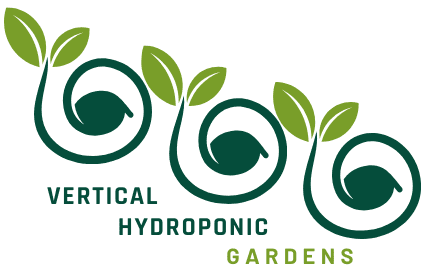Preventing and Treating Fungal Diseases in Vertical Hydroponics

Introduction
Welcome to the world of vertical hydroponics! In this section, we will explore the fundamental aspects of vertical hydroponics and the role of fungal diseases within this innovative gardening method. Let’s delve into the intricacies of fungal diseases in vertical hydroponics and learn how to prevent and treat them effectively. By the end of this section, you will have a comprehensive understanding of the challenges and strategies associated with fungal diseases in vertical hydroponics.
Understanding Fungal Diseases in Vertical Hydroponics
What are Fungal Diseases in Vertical Hydroponics?
Fungal diseases in vertical hydroponics refer to the various infections and issues caused by fungi that can affect the plants grown in this unique system. These diseases can have detrimental effects on plant health, growth, and overall productivity, posing significant challenges to vertical hydroponic farming.
- Common fungal diseases in vertical hydroponics include:
- Root Rot
- Powdery Mildew
- Fusarium Wilt
- Pythium
- Botrytis
- Preventing fungal diseases in vertical hydroponics can be achieved through:
- Maintaining proper air circulation
- Monitoring and controlling humidity levels
- Using sterilized equipment and growing medium
- Implementing a strict sanitation routine
Common Types of Fungal Diseases in Vertical Hydroponics
Fungal diseases are a significant concern in vertical hydroponic systems, posing various threats to plant health and overall crop productivity. Understanding the common types of fungal diseases in vertical hydroponics is crucial for effective disease management and prevention. Below are detailed descriptions of the most prevalent fungal diseases in vertical hydroponic setups:
- Powdery Mildew: Powdery mildew is a widespread fungal disease that affects a wide range of plants, including those grown in vertical hydroponics. It presents as a white or grayish powdery growth on the surfaces of leaves, stems, and flowers, ultimately leading to weakened plants and reduced yields.
- Fusarium Wilt: Fusarium wilt is caused by the soil-borne fungus Fusarium, which can infect plants in vertical hydroponic systems. This disease is characterized by the yellowing and wilting of leaves, often starting at the lower part of the plant and progressing upwards. It can cause irreversible damage to the plant’s vascular system, leading to stunted growth and eventual death.
- Damping-off: Damping-off is a common fungal disease that primarily affects seedlings and young plants in vertical hydroponic setups. It causes sudden wilting, browning, and collapse of the stem at or near the soil line, resulting in plant loss and reduced crop establishment.
- Leaf Spot Diseases: Various fungal pathogens can cause leaf spot diseases in plants grown in vertical hydroponics. These diseases manifest as circular or irregular spots on the leaves, often surrounded by a distinct border. If left unmanaged, leaf spot diseases can lead to defoliation and reduced photosynthetic capacity.
By being able to identify and understand the characteristics of these common fungal diseases in vertical hydroponics, growers can implement targeted control measures and cultural practices to minimize the impact of these detrimental pathogens on their crops.
Causes of Fungal Diseases in Vertical Hydroponics
Vertical hydroponic systems are susceptible to fungal diseases due to various factors. Understanding the causes of these diseases is crucial for effectively managing and preventing their occurrence. Let’s explore the specific factors behind fungal diseases in vertical hydroponics:
- Inadequate Air Circulation: Insufficient airflow within the vertical hydroponic setup can lead to stagnant air, creating a conducive environment for fungal growth. Proper ventilation systems are essential to mitigate this risk.
- High Humidity Levels: Excessive humidity provides an ideal breeding ground for fungi. Maintaining optimal humidity levels through proper environmental control is necessary to prevent fungal proliferation.
- Contaminated Nutrient Solutions: The presence of contaminants or pathogens within the hydroponic nutrient solutions can introduce fungal spores to the system. Implementing rigorous quality control measures for nutrient solutions is vital.
- Poor Plant Hygiene Practices: Neglecting the hygiene of plants and the hydroponic system can promote fungal infections. Regular cleaning and maintenance routines are essential to minimize the risk of fungal diseases.
- Suboptimal Growing Conditions: Factors such as improper temperature, light exposure, and pH levels can weaken plant immunity, making them more susceptible to fungal attacks. Ensuring optimal growing conditions is crucial for preventing fungal diseases.
Preventive Measures for Fungal Diseases
Maintaining Ideal Growing Conditions in Vertical Hydroponics
To minimize the risk of fungal diseases, it is crucial to maintain ideal growing conditions within the vertical hydroponic system. This includes regulating humidity, temperature, and light exposure, as well as ensuring proper airflow to discourage fungal growth and proliferation.
Choosing Disease-Resistant Plants for Vertical Hydroponics
Selecting disease-resistant plant varieties is an effective strategy for mitigating the impact of fungal diseases in vertical hydroponics. By carefully choosing resistant cultivars, growers can reduce the susceptibility of their crops to common fungal infections, enhancing overall crop resilience.
Hygiene and Sanitation Practices for Preventing Fungal Diseases
Maintaining strict hygiene and sanitation practices is vital for preventing fungal diseases in vertical hydroponics. This includes sterilizing equipment, employing proper sanitation protocols, and implementing strict hygiene measures to minimize the risk of fungal contamination in the growing environment.
- Regular Cleaning: Implement a schedule for regular cleaning of the hydroponic system, including trays, pipes, and reservoirs, to prevent the buildup of organic matter that can harbor fungal pathogens.
- Air Circulation: Ensure adequate airflow and ventilation within the growing area to reduce humidity and moisture, creating an environment less conducive to fungal growth.
- Sterilization Techniques: Employ effective sterilization techniques for tools, equipment, and growing medium to eliminate any existing fungal spores and prevent their proliferation.
- Sanitation Protocols: Establish and follow strict sanitation protocols to minimize the introduction and spread of fungal diseases within the hydroponic system, including handwashing, tool disinfection, and strict containment of potentially contaminated materials.
Treating Fungal Diseases in Vertical Hydroponics
Identifying Signs of Fungal Diseases in Vertical Hydroponics
Accurate identification of the signs and symptoms of fungal diseases in vertical hydroponics is essential for implementing timely treatment. Visual cues such as discoloration, wilting, and unusual growth patterns can indicate the presence of fungal infections, prompting growers to take appropriate remedial actions.
- Discoloration: One of the primary signs of fungal diseases in vertical hydroponics is the presence of discoloration in the leaves or stems. This can manifest as yellowing, browning, or spotting, depending on the type of fungal infection.
- Wilting: Fungal infections can cause plants to exhibit wilting symptoms, where the leaves and stems lose their turgidity and appear limp and droopy. This is often a result of the fungus disrupting the water and nutrient uptake of the plant.
- Unusual Growth Patterns: Keep an eye out for any unusual growth patterns such as stunted growth, distorted leaves, or abnormal branching. These anomalies may indicate the presence of a fungal disease affecting the plant’s development.
- Fungal Spores: In some cases, visible fungal spores may be present on the plant surface, appearing as powdery or fuzzy growth. This is a clear indication of fungal infection and should be addressed promptly to prevent further spread.
Natural Remedies for Treating Fungal Diseases
Utilizing natural remedies such as neem oil, garlic spray, and bicarbonate solutions can offer effective treatment options for fungal diseases in vertical hydroponics. These natural alternatives provide sustainable and organic means of controlling fungal infections without the use of synthetic chemicals.
Chemical Treatments for Fungal Diseases
When natural remedies may not suffice, chemical treatments such as copper-based fungicides and biofungicides can be employed to address severe fungal diseases in vertical hydroponics. It is essential to follow recommended application guidelines and adhere to safety precautions when utilizing chemical treatments.
- Types of Chemical Treatments:
- 1. Copper-based fungicides: These are effective in controlling a wide range of fungal diseases and are safe to use in hydroponic systems. However, overuse can lead to the accumulation of copper in the system, which may be harmful to plants.
- 2. Biofungicides: These are eco-friendly alternatives to traditional chemical fungicides and can be used as part of an integrated disease management strategy. They work by introducing beneficial microorganisms that compete with pathogenic fungi, thereby suppressing their growth.
- Application Guidelines:
- 1. It is important to carefully read and understand the application guidelines provided by the manufacturer.
- 2. Follow the recommended dosage and application frequency to avoid the risk of phytotoxicity and minimize the potential for resistance development in fungal populations.
- Safety Precautions:
- 1. Wear appropriate personal protective equipment (PPE), such as gloves, goggles, and a mask, when handling chemical treatments.
- 2. Store chemical treatments in a secure location away from children and pets. Ensure proper labeling and secure packaging to prevent accidental exposure.
Best Practices for Vertical Hydroponics Maintenance
Regular Monitoring and Inspection
Regular Monitoring and Inspection
- Regular monitoring and inspection of the vertical hydroponic system are critical for early detection of potential fungal diseases.
- By proactively observing plant health and system conditions, growers can identify issues promptly and take necessary corrective actions to maintain a healthy growing environment.
- Key Aspects of Regular Monitoring and Inspection:
- Visual Checks: Regular visual inspections of plant leaves, stems, and root systems for any signs of discoloration, wilting, or unusual growth patterns.
- System Performance: Monitoring the efficiency of the hydroponic system, including water flow, nutrient distribution, and pH levels.
- Environmental Conditions: Checking and recording temperature, humidity, and light levels within the growing area to ensure optimal conditions for plant growth.
- Pest and Disease Assessment: Regular assessment for pests, insects, and diseases that can impact plant health and implementing appropriate pest control measures.
- Data Documentation: Keeping detailed records of monitoring observations, including dates, findings, and any actions taken.
Nutrient Management in Vertical Hydroponics
Effective nutrient management is essential for the successful growth of plants in vertical hydroponic systems. By providing plants with balanced nutrition, maintaining optimal pH levels, and ensuring efficient nutrient uptake, the risk of fungal infections and other diseases can be minimized.
- Balanced Nutrient Solutions: Utilizing a carefully formulated nutrient solution that provides plants with essential macronutrients (nitrogen, phosphorus, and potassium) as well as micronutrients (iron, zinc, copper, etc.) is vital for their overall development.
- pH Regulation: Maintaining the proper pH level of the nutrient solution is crucial for optimizing nutrient availability to plants. This ensures that nutrients remain in a form that is easily absorbed by the root system.
- Enhanced Nutrient Uptake: Employing strategies such as root zone temperature control and utilizing beneficial microorganisms can enhance nutrient uptake, promoting vigorous plant growth and disease resistance.
Regularly monitoring and measuring nutrient uptake and plant health indicators, such as leaf color, root development, and overall growth rate, is essential for fine-tuning the nutrient management strategy. By identifying early signs of nutrient deficiencies or imbalances, adjustments to the nutrient solution can be made, ensuring optimal plant health.
Ventilation and Air Circulation in Vertical Hydroponics
Optimizing ventilation and air circulation within the vertical hydroponic setup is crucial for creating an unfavorable environment for fungal growth. Adequate airflow helps in reducing excess humidity and prevents stagnant conditions, thereby mitigating the risk of fungal diseases affecting the plants.
- Key Factors for Effective Ventilation:
- Airflow Direction: Proper airflow direction ensures that fresh air is consistently supplied to all plant levels, aiding in the prevention of mold and mildew.
- Ventilation Systems: Implementing efficient ventilation systems, such as fans and ducts, contributes to maintaining optimal air circulation and preventing the buildup of excess moisture.
- Relative Humidity Control: Monitoring and controlling the relative humidity levels within the hydroponic environment is essential for minimizing the risk of fungal growth.
Additionally, ensuring that the vertical hydroponic system is well-ventilated promotes the efficient exchange of gases, aiding in the transportation of essential nutrients to the plants’ root systems and supporting overall growth and development.
Conclusion
In conclusion, managing fungal diseases in vertical hydroponics requires a comprehensive understanding of preventive measures, treatment strategies, and maintenance practices. By addressing the challenges posed by fungal diseases, growers can cultivate healthy and productive crops in their vertical hydroponic gardens. Empowered with the knowledge presented in this guide, you are equipped to proactively manage fungal diseases and foster a thriving vertical hydroponics system.
